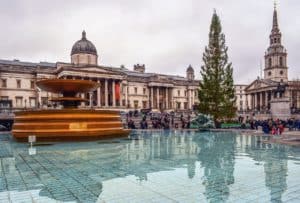Masks Significance: Unveiling Their Role in Global Celebrations

Updated On: April 20, 2024 by Panseih Gharib
Masks Significance have been an integral component of human culture across various societies for millennia. They are more than just face coverings; they are powerful symbols that have been an essential part of traditions, representing everything from gods and spirits to societal roles. Across the globe, they serve as a medium for storytelling, spirituality, and the conveyance of inherited cultural knowledge. Often, they play a pivotal role in rituals and ceremonies, embodying the essence of cultural heritage and providing a link between the past and present.

These versatile artefacts are not confined to solemn or sacred events; many cultures utilise masks in lively festivals and celebrations. These festivities often mark important occasions on the calendar, from season changes to historical events, underlining the masks’ ability to unite people in shared experiences. Throughout their existence, masks have also evolved artistically, inspiring new generations and continuing to influence various art forms. From the vibrant masks in storied carnivals to those used in theatrical performances, each tells a unique tale and offers an insight into the hearts of cultures and communities.
Key Takeaways
- Masks Significance as poignant symbols in preserving and expressing cultural heritage.
- Their roles range from sacred rituals to communal festivities, showcasing masks’ versatility in cultural expression.
- The evolution of masks continues to impact art and performance, highlighting their relevance and adaptability in contemporary society.
The Historical Roots of Masks Significance
Masks serve as a bridge to our past, encapsulating tradition, artistry, and ancestral ties. They reflect a rich tapestry of cultural practices deeply intertwined with human history.
Prehistoric Origins and Uses
Our ancestors crafted masks from natural materials, employing them in rituals that spanned the spectrum of life and death. In these prehistoric times, masks’ Significance is apparent in rites of passage, embodying ancestral wisdom and marking significant transitions in one’s life. These early masks are made of bone, wood, or leather, symbolise a profound connection to tradition and the natural world.
Masks Significance in Ancient Civilisations
In Africa, masks are not mere ornamental objects but rather a means to connect with the spiritual realm. They are ingrained in the fabric of society, with each mask reflecting the artistic style and religious beliefs of the region. Ancient Egyptians, Greeks, and Romans utilised masks in theatres and religious ceremonies, attributing to them a historical significance that continues to be celebrated in festivals and cultural narratives today. These masks were more than disguises; they were representations of gods, mythologies, and the collective identity, crafted with precision and a deep sense of purpose.
Masks Significance in African Culture
Masks hold a profound place within African communities, serving as a bridge to the spiritual world during ceremonies and symbolising communal identity.
African Masks and Community
In African culture, masks are pivotal in defining the essence of the community. They are not mere art objects but manifest the values, social roles, and collective memory of the people. In many ceremonies, masks are believed to allow wearers to communicate with ancestors and deities, serving as vessels for guidance and wisdom. These potent symbols are used in initiation rites, funerals, and crop harvest celebrations, pivotal moments where the cohesion and continuity of the community are reinforced.
Varieties and Functions Of African Masks
African masks come in diverse forms, each with distinct functions. West Africa is renowned for its rich variety of masks, each region boasting its unique style. Whether covering just the face, the entire head, or even being part of a larger costume that includes the torso, African masks are meticulously crafted to fulfill specific purposes.
- Types: Some masks represent animals, combining human and animal features to impart moral lessons or represent ideals like courage or wisdom.
- Functions: Others are used in healing rituals, believed to harbour energies that protect from negative forces or channel healing from the spiritual realm.
The craftsmanship of these masks is so profound that they have captivated collectors and enthusiasts worldwide, eager to preserve and celebrate the vibrant and dynamic cultures that create them. It is through these African tribal masks that the diversity and creativity of African cultures are showcased and appreciated, highlighting a rich heritage that is both ancient and continually evolving.
Symbolism and Spirituality of Masks

In this section, we explore the profound meanings and spiritual significance behind the use of masks in various cultures. Masks are not merely objects; they are gateways to the spiritual realm and a means to express the intricate relationship between humans, animals, spirits, and deities.
Representing the Spiritual Realm
Masks often serve as conduits between the physical world and the spiritual world. They are believed to wield power that can invoke spirits or embody deities during rituals and ceremonies. For many cultures, donning a mask provides a transformative experience that allows the wearer to connect with the human spirit and the cosmos. This act of transformation is a physical expression of a spiritual connection, allowing participants and observers to traverse the boundaries of the seen and unseen worlds.
Animal Symbolism in Masks
Animal masks carry specific symbolism, with each creature representing distinct traits and powers. For instance, a lion mask might symbolise courage and strength, while a bird mask could represent freedom or a connection to the heavens. The crafting of animal masks is a meticulous art form; every colour, shape, and adornment is purposeful, aimed at capturing the essence of the animal it represents. These masks allow performers to channel the animal’s spirit during festivals and rituals, further blurring the line between mortal and divine, highlighting a deep respect for the animal kingdom and its spiritual significance in human life.
Masks Significance in Rituals and Ceremonies
Masks have served as pivotal elements in rituals and ceremonies, embodying spiritual importance and representing protection and life’s transitions across various cultures.
Initiation and Rites of Passage
Throughout numerous societies, masks play a crucial role in initiation ceremonies and rites of passage. These practices often symbolise the transition from childhood to adulthood. Participants may wear masks during these events to symbolise their encounter with the spiritual realm or to denote their new status within the community. For instance, in many African cultures, dancers donned in masks perform during initiation rituals, acting as mediators between the physical and spiritual worlds and guiding initiates through their transformative journey.
Healing and Protective Rituals
Masks are also integral to healing and protective rituals, believed to harness blessings and fend off malevolent forces. In these ceremonies, they frequently represent deities or ancestral spirits, invoked for their healing powers or protection. The performers wearing these masks embody their roles, with their actions believed to channel the spirits’ influence, offering healing and protection to individuals or the entire community. Such rituals reassure participants of their connectivity with the spiritual realm and its benevolent force in everyday life.
Artistic Aspects of Masks
In exploring the artistic aspects of masks, we uncover a world where art melds with tradition to create objects of profound expression and beauty. The craftsmanship and artistry behind each mask can communicate cultural narratives, embody spirits, or mark ceremonial occasions.
Craftsmanship and Materials
The materials chosen in mask-making are as varied as the cultures they represent, often sourced from the local environment to imbue each piece with the essence of its origins. Clay, a pliable and durable medium, is frequently utilised by artisans to mould masks that may later be adorned with pigments. Similarly, beads offer a dazzling array of colours and can depict complex patterns, adding a layer of opulence to the underlying shape. The choice of material not only contributes to the mask’s aesthetic appeal but also its cultural significance.
- Clay: Offers earthy textures and can be fired to achieve different finishes.
- Beads: Utilised for their colour and reflective qualities, beads can create intricate detailing.
Artisans and Their Creations
The artisans who create these masks are not merely craftspeople; they are artists, storytellers, and guardians of their heritage. Each mask is a testament to their skill, shaped by experienced hands that understand the weight of tradition. Through their work, they ensure that ancient techniques are preserved, passed down through generations with each stroke of their tools. Artistry in mask-making is not just about creating an object; it’s a form of expression, where every colour choice and design element is deliberate and meaningful.
- Expression: Each mask conveys a specific sentiment, purpose, or identity through its design.
- Patterns: Often carry symbolic meanings and are carefully incorporated by the artisans.
Masks Significance in Festive Celebrations
Masks have long been a pivotal element in festive celebrations, intertwining tradition with a sense of communal identity.
Masks Significance in Harvest Festivals
Masks significance during harvest festivals are steeped in agrarian roots, symbolising gratitude and the bountiful yields of the land. These festivals often mark a period of unity as communities come together to celebrate the fruits of their collective labour. For instance, colourful masks may embody the spirit of fertility and prosperity.
Masks Significance in Annual Cultural Festivals
Annual cultural festivals also see an array of masks, reflecting a rich tapestry of history and entertainment. Masks play a central role in the Dia de los Muertos, a Mexican tradition honouring ancestors, where faces painted to resemble skulls signify remembrance. Similarly, the resplendent masks of the Carnival of Venice depict a tradition dating back centuries, encapsulating romance and mystery within the iconic Italian festivities.
Masks Significance and Cultural Identity
In exploring the rich tapestry of cultures worldwide, we often encounter masks as potent symbols of cultural identity. They serve as a bridge connecting us to the beliefs, practices, and stories unique to each community.
Beliefs and Values Embodied in Masks
Masks hold a mirror to the core values and beliefs of a culture. They are more than mere adornments; they bring to life the collective wisdom of generations, encapsulating ethos and traditions through their visual narratives. In African societies, for example, masks can represent a vast array of societal roles, from embodying the spirits of ancestors to symbolising various virtues such as justice or courage.
Fostering Connection and Legacy
Masks are a medium through which we can engage with the legacy of our predecessors. As we don the masks during festivals or rituals, we become part of an ongoing cultural practice, strengthening our connection to both our past and community. It’s a story of continuity, where every mask worn is a thread in the fabric of a cultural identity spanning centuries, fostering a bond that transcends time and individual existence.
Global Influence and Diversity
In this section, we explore how masks transcend geographical boundaries, shaping global cultures and the world of contemporary art.
Masks Beyond Borders
Across the globe, masks hold profound cultural significance beyond their communities of origin. Indigenous cultures have used them for centuries in rituals and ceremonies. In Mexico, for example, masks feature prominently in the Day of the Dead celebrations, where skulls are a recurring motif, representing spirits returning for their annual visit. Similarly, in Bali, masks are worn during performances to depict gods and ancestors. These customs have influenced festivities worldwide, creating a shared language of symbolism and meaning.
Influence on Modern Art and Culture
The aesthetic and symbolic power of masks has penetrated modern art and culture. Venice’s opulent masks, adorned with intricate detail and rich history, have become iconic in the art world, inspiring artists and designers. Meanwhile, Japan’s Noh masks, with their delicate expressions, have contributed to the minimalist aesthetic in art. In China, the use of masks in opera has been a means of storytelling for generations. Even the fashion industry frequently draws upon the rich diversity of masks, weaving traditional elements with contemporary design.
Masks Significance in Storytelling and Performance
Masks have been pivotal in expressing narratives and evoking emotions in cultural spectacles. We see them bring myths to life and captivate audiences, allowing for a transformative experience.
Theatrical Uses of Masks
In the realm of theatre, masks serve as essential tools that aid actors in creating a bridge to ancient traditions and stories. Noh theatre, a classical Japanese performance style, utilises masks extensively. These masks are revered for their ability to embody the characters’ essence, be it a deity, ghost, or woman, thereby enhancing the storytelling element. Noh masks are often neutral in expression which allows the actor’s slight movements to convey a range of emotions from joy to despair, adding depth to the performance. The use of masks in Noh is a tradition with meticulous craftsmanship behind each mask, translating to impactful and nuanced storytelling on stage.
Narratives and Metaphors
Masks in cultural festivities worldwide serve not just as adornments but also as powerful metaphors. They are employed to narrate stories, often of historical significance or embodying moral lessons. During these festivities, performers don masks to become the physical representation of myths and legends, ensuring the continuity of cultural narratives. The stories told through these masks are rich in symbolism, with each element of the mask’s design serving to convey a specific aspect of the story. At cultural festivals, the vibrant use of masks captivates audiences, providing an immersive experience that is both educational and enchanting.
Contemporary Perspectives on Masks
In today’s world, masks have transcended their traditional roles, becoming multifaceted symbols in global culture and well-being.
Masks Significance in Today’s World
Masks today serve as a point of intersection between health, culture, and artistic expression. Throughout various cultures, they remain integral to community festivals and individual identity. For art enthusiasts and collectors, masks have become prized objects for their historical value and craftsmanship. The transformation of masks from cultural artefacts to coveted art pieces speaks to their enduring appeal and the ever-changing nature of their significance.
In the realm of health and well-being, masks have taken on new importance. They have become not only protective barriers but also platforms for personal expression, with people choosing masks that represent their tastes or beliefs. This functional yet artistic role of masks in daily life highlights their contemporary cultural relevance beyond festivals and rituals.
The Evolution of Masks Significance as Art Pieces
Since ancient times, masks have been a cornerstone of artistic expression. Their role has evolved: once integral to ceremony and communication with the divine, they now also celebrate artistic innovation. This shift has transformed masks into objects of aesthetic and historical curiosity.
For collectors and art enthusiasts, masks offer a tangible connection to the transformation of cultural traditions. As art pieces, masks incorporate traditional methods and modern creativity, resulting in unique items that offer insight into both past and contemporary artistic landscapes. These transformations reinforce masks’ significance, underscore their cultural resonance, and reaffirm their place within the sphere of global artistic heritage.
The Collectibility and Conservation of Masks

In the realms of heritage and culture, masks embody significant value, ranging from their spiritual connotations to their economic worth as collectibles. Our focus here is twofold: the meticulous preservation of masks to uphold cultural heritage and their coveted status among collectors.
Preservation of Masks
Heritage Conservation: We regard the conservation of masks as crucial for safeguarding cultural heritage. Often representing ancestral spirits or used in rituals, these masks require specialist conservation techniques to maintain their integrity over time. For instance, in the Ivory Coast, masks aren’t merely artefacts; they’re vibrant embodiments of history and culture, necessitating careful preservation to ensure their survival for future generations.
- Materials and Techniques: It’s vital to employ suitable materials and conservation techniques that sympathise with the original construction of the masks. This might involve stabilising delicate materials like wood, fibre, or even ivory, using non-invasive methods.
Masks as Collectible Items
Collectors’ Items: Masks have long piqued the interest of collectors worldwide, coveted for their artistic and historical merit. Collecting such masks goes beyond hobbyism; it’s a form of communication, connecting us with past prosperity and the cultural significance of the societies these masks originate from.
- Market and Value: The market for collectible masks is dynamic, with value often attributed to their authenticity, provenance, and condition. We strive to educate collectors on the importance of provenance to discourage the illicit trade of culturally significant items.
In handling collectibles, we ensure that both preservation and the joy of collecting are harmoniously balanced, to respect the profound cultural contexts from which these masks emerge.
Frequently Asked Questions
In this section, we’ll explore the multifaceted roles that masks have played throughout history and across various cultures. We’ll uncover the symbolism behind mask designs, their influence in African traditions, their religious connections, and their celebratory functions during festivals like Carnival.
What roles have masks played in significant historical events?
Masks significance is apparent in historical events, often used to conceal identities or symbolise power and transformation during pivotal societal changes. For instance, they were employed in traditional European masquerades that marked political shifts or celebrated royal events.
How do masks function within various global cultural traditions?
Across the globe, masks serve as a bridge to the spiritual world, representing deities, spirits, and ancestors in cultural rituals. They’re integral to Dan culture in Liberia or the vibrant traditions of Mexican festivities, where they embody complex societal beliefs and practices.
What meanings are attributed to different designs of cultural masks?
Designs of cultural masks are steeped in symbolism; they can signify social status, spiritual beliefs, or attributes like courage and wisdom. The intricate patterns and ornamentation on each mask are deliberate and tell a story integral to the culture from which they originate.
In what ways have African ceremonial masks influenced local traditions?
African ceremonial masks are deeply entwined with local traditions, serving as a medium for education and social cohesion during initiations, funerals, and celebrations. Their use promotes respect for ancestral heritage and reinforces the moral fabric of the community.
How have ritual masks been utilised in religious ceremonies?
Ritual masks are often used in religious ceremonies to convey moral narratives, offer protection, and facilitate communication with divine entities. They can transform the wearer, allowing them to take on the persona of gods or saints to convey teachings and blessings.
What are the underlying reasons for donning masks during Carnival festivities?
During Carnival, masks are donned as part of a tradition to remove social barriers and enable free expression. They symbolise revelry and the inversion of day-to-day norms, allowing participants to celebrate with a sense of anonymity and liberation.






